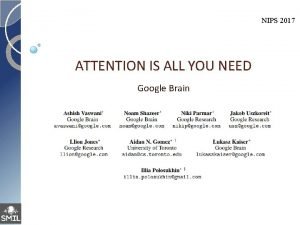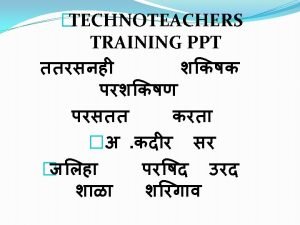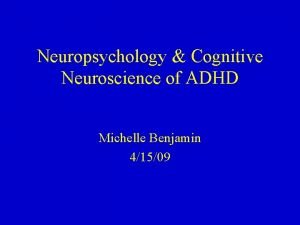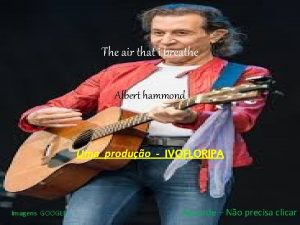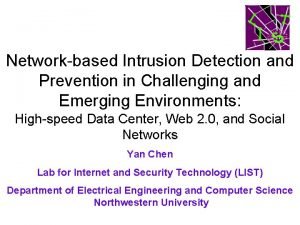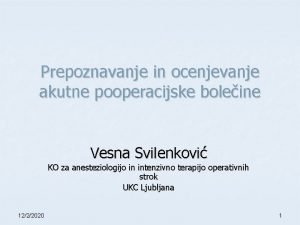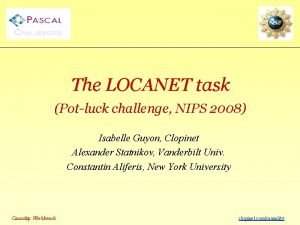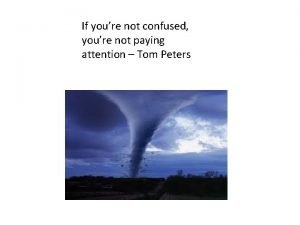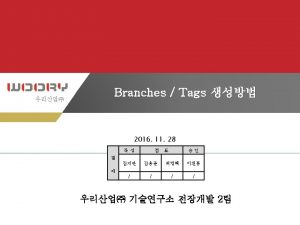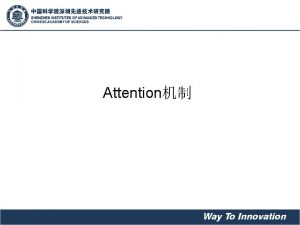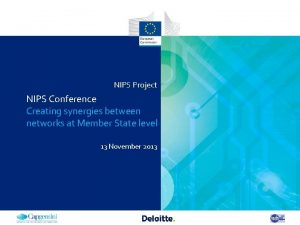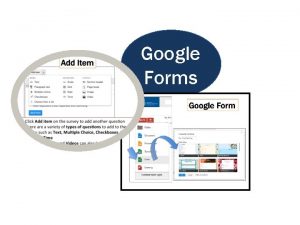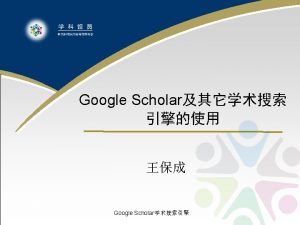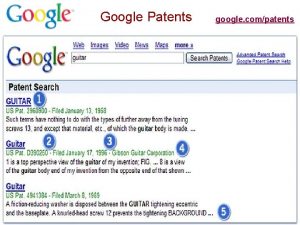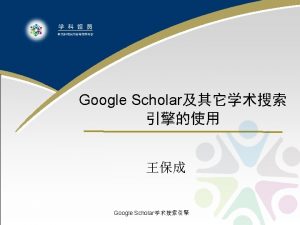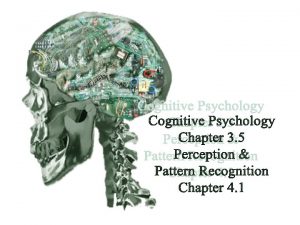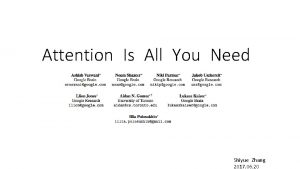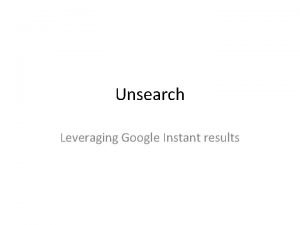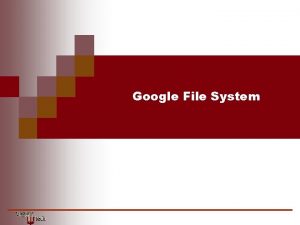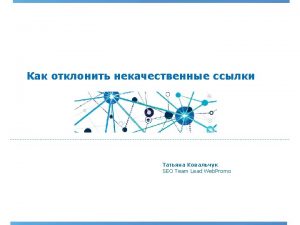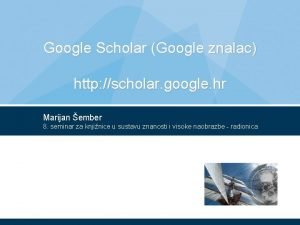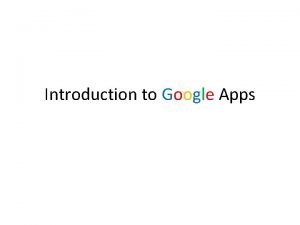NIPS 2017 ATTENTION IS ALL YOU NEED Google























- Slides: 23

NIPS 2017 ATTENTION IS ALL YOU NEED Google Brain

Abstract � Propose a new simple network architecture , the Transformer, based solely on attention mechanisms, dispensing with recurrence and convolutions entirely. � Experiments on two machine translation tasks: WMT 2014(English-to-German & English-to-French) show these models to be superior in quality while being more parallelizable and requiring significantly less time to train.

Introduction � Recurrent models typically factor computation along the symbol positions of the input and output sequences. Recent work has achieved significant improvements in computational efficiency. The fundamental constraint of sequential computation, however, remains. � Attention mechanisms, allowing modeling of dependencies without regard to their distance in the input or output sequences, however, are used in conjunction with a recurrent network. � the Transformer, a model architecture eschewing recurrence and instead relying entirely on an attention mechanism to draw global dependencies between input and output.

Model Architecture 4

Encoder and Decoder Stacks � 5

Encoder and Decoder Stacks 6

Attention � An attention function can be described as mapping a query and a set of key-value pairs to an output. � Where the query, keys, values, and output are all vectors. The output is computed as a weighted sum of the values. � Where the weight assigned to each value is computed by a compatibility function of the query with the corresponding key.

Attention �

Self-Attention 9


Self-Attention 11

Multi-Head Attention

Multi-Head Attention 13

Position-wise Feed-Forward Networks 14

Positional Encoding 15

Applications of Attention in Transformer � Encoder-Decoder Attention Layer: The queries(Q) --- from previous decoder layer memory keys(K) & values(V) --- from output of the encoder. � This allows every position in the decoder to attend over all positions in the input sequence. 16

Applications of Attention in Transformer � Self-Attention layers in the Encoder: All of the keys, values and queries come from the same place. 17

Applications of Attention in Transformer � Self-Attention layers in the Decoder: To prevent leftward information flow in the decoder. We implement this inside of scaled dot-product attention by masking out (setting to −∞) all values in the input of the softmax which correspond to illegal connections. (Leftward information) 18


Why Self-Attention � Total computational complexity: Self-attention layers are faster than recurrent layers when the sequence len(n) < the representation dimensionality d � Parallelization: Requiring less time to train. � Performance for tasks involving very long sequences: Self-attention could be restricted to considering only a neighborhood of size r in the input sequence centered around the respective output position. 20

Results 21

Results 22

Conclusion & Future work � Presented the Transformer, the first sequence transduction model based entirely on attention, replacing the recurrent layers most commonly used in encoder-decoder architectures with multi-headed self-attention. � On both WMT 2014 English-to-German & English-to-French translation tasks, we achieve a new state of the art. � To investigate local, restricted attention mechanisms to efficiently handle large inputs and outputs such as images, audio and video. � Making generation less sequential is another research goals. 23
 Attention is all you need
Attention is all you need I wish you the strength
I wish you the strength Http://प
Http://प Michelle benjamin phd
Michelle benjamin phd I need attention
I need attention How to organize a persuasive speech
How to organize a persuasive speech Love is not all analysis
Love is not all analysis All i need is the air that i breathe and to love you abba
All i need is the air that i breathe and to love you abba Money is all you need
Money is all you need Children's pain scale
Children's pain scale Socrates pain
Socrates pain Winrpc
Winrpc Spongebob cheese nips
Spongebob cheese nips Nips ağri skalasi
Nips ağri skalasi Cpot
Cpot Panorama nips
Panorama nips Gbob stands for
Gbob stands for Nips
Nips If you're not confused you're not paying attention
If you're not confused you're not paying attention Any question thank you
Any question thank you New speaker new line worksheet
New speaker new line worksheet Name a line containing point a
Name a line containing point a 馮定華神父
馮定華神父 All of you is more than enough for all of me
All of you is more than enough for all of me
